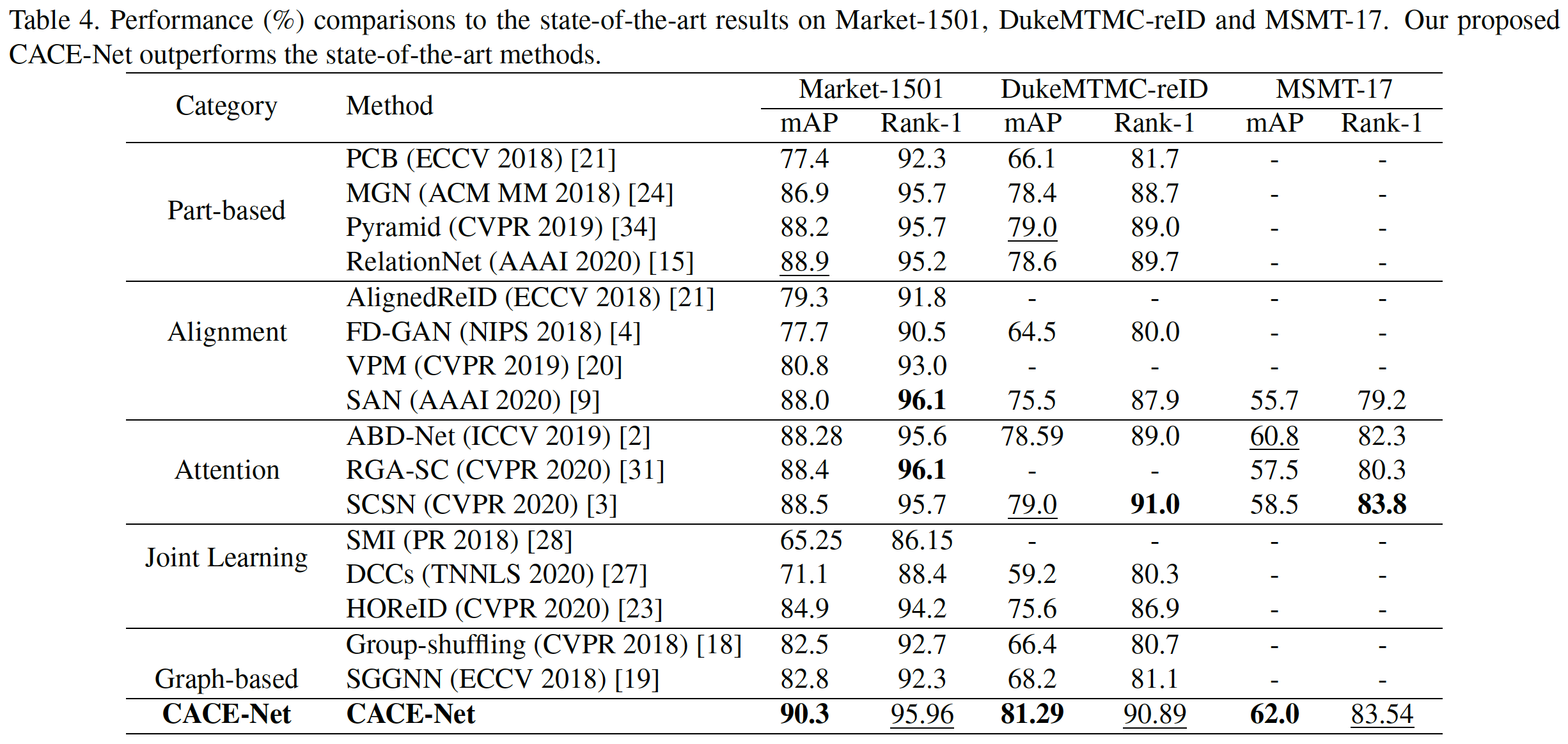This is the tensorflow implementation of our paper "Devil’s in the Details: Aligning Visual Clues for Conditional Embedding in Person Re-Identification". In this paper:
- CACE-Net is able to integrate both visual clue alignment and conditional feature embedding into a unified ReID framework
- Instead of using a pre-defined Adjacency Matrix, our CACE-Net uses a novel correspondence attention module where the visual clues is automatically predicted and dynamically adjusted during training
python >= 3.6 tensorflow >= 1.8
-
File Directory: ├── partitions.pkl ├── images │ ├── 0000000_0000_000000.png │ ├── 0000001_0000_000001.png │ ├── ...
-
Rename the images in following convention: "000000_000_000000.png" where the first substring splitted by underline is the person identity; for the second substring, the first digit is the camera id and the rest is track id; and the third substring is an image offset.
-
"partitions.pkl" file This file contains a python dictionary storing meta data of the datasets, which contains folling key value pairs "train_im_names": [list of image names] #storing a list of names of training images "train_ids2labels":{"identity":label} #a map that maps the person identity string to a integer label "val_im_names": [list of image names] #storing a list of names of validation images "test_im_names": [list of image names] #storing a list of names of testing images "test_marks"/"val_marks": [list of 0/1] #0/1 indicates if an image is in gallery
- Configure basic settings in core/config
- Define the network in net and register in the factory.py
- Set the corresponding hyperparameters in the experiment yaml
- set experiment.yaml path in config.yaml
- python train.py
- Configure settings in eval_config.yaml, pay attetion to set train_mode false
- register in val.save_pb
- python evalution.py
yaml: 'experiment/graph/cacenet.yaml'market: [mAP: 90.11%], [cmc1: 95.84%]
If you find this code useful, please cite the following paper:
@article{jiang2020devil,
title={Devil's in the Detail: Graph-based Key-point Alignment and Embedding for Person Re-ID},
author={Jiang, Xinyang and Yu, Fufu and Gong, Yifei and Zhao, Shizhen and Guo, Xiaowei and Huang, Feiyue and Zheng, Wei-Shi and Sun, Xing},
journal={arXiv preprint arXiv:2009.05250},
year={2020}
}

